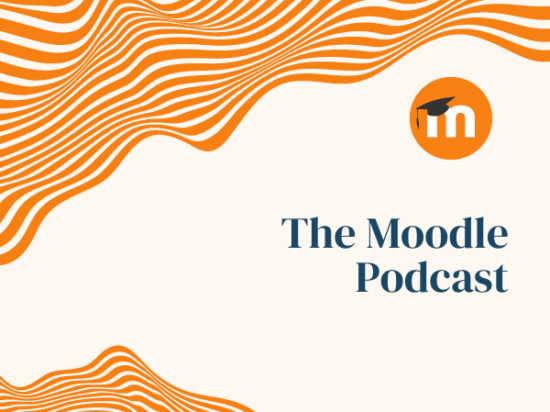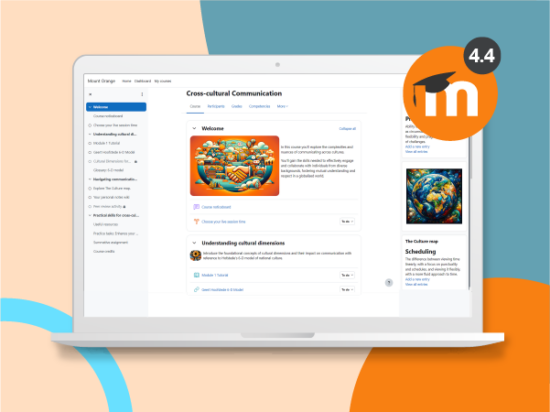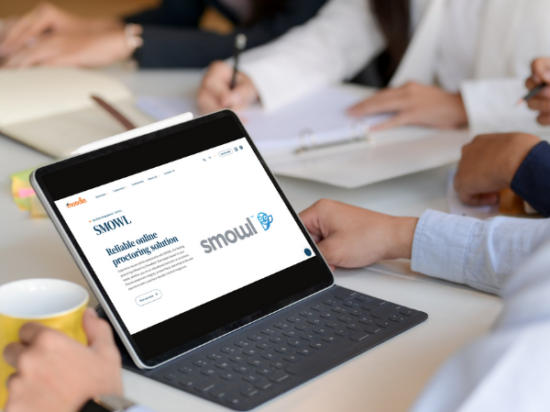Moodle 3.3 was released on Monday 15 May and since then we have outlined a number of the key features in this release.
One of the main feature for Moodle 3.3 is of course the improved dashboard that allows users to have faster and easier access to their required courses and activities!
If you have seen our step by step guide video on the new dashboard for Moodle 3.3 as a student or teacher you would have noticed the following enhancements:
- When a student logs into Moodle, they will now see a timeline of activities due and direct links to the activities, which can be sorted by date or courses.
- The courses tab now also features an overview of current courses, those in progress and a list of past and future courses.
- Teachers also have a similar overview with reminders on relevant activities such as assignments that need to be graded being clearly visible and accessible.
Now…do you know how we got to this new and improved dashboard in Moodle 3.3?
Well…the new course overview block was the chosen project submitted by the Moodle Users Association (MUA) – an official non-profit organisation dedicated to contributing towards the core development of Moodle.
How did the MUA get to choosing this project for development in Moodle 3.3?
We go behind the scenes to the original source as we talk to MUA member and the project submitter, Gemma Lesterhuis, on the why, how, what made her submit this great project!
Moodle: Thanks Gemma for taking the time to chat to us about the new dashboard in Moodle 3.3.
Would you be able to please start with telling us a little bit about yourself – what is your professional background and what has been your involvement with Moodle?
Gemma: I started using Moodle in 2013. At that time I worked full-time at a company, as what you can call a Business IT Liaison. In this role I was responsible for making a connection between IT and the organization while implementing Moodle.
For the organization I was the contact person for the IT department, setting up the site administration and a course template, making manuals, answering questions etc.
Moodle: So, moving to the topic of the new dashboard that everyone is excited about…can you tell us, what prompted you to propose the project?
Gemma: From the moment I started with Moodle, I found the Dashboard clumsy and it has always annoyed me in some way. So every update I hoped for an improvement and I think I tried out almost every plugin that gave just a different idea on the Dashboard. But nothing gave me the feeling that it worked. It was always close but never there.
When I became a freelancer, I actually decided that if I would introduce a plugin it would be an improved Dashboard. But I also felt it would be a too big of project for myself to carry. So over the years (2 in total) I did a bit by bit research, like doing random courses on other learning management system (LMS) systems and writing down what I liked about it. I also gathered up all the (re)questions I received from teachers and students regarding the Dashboard and read on the Moodle forums etc.
But the project really came to being in phase 2 of the Moodle Users Association (MUA). For me it felt like: “Okay if I want this, now I really need to work for it.”
And I started to ask for input from my network and MUA members.
Moodle: Once you came up with the proposal, can you tell us a bit about the next process of submitting your project and how it was voted as “the one” for Moodle 3.3 core development?
Gemma: When you introduce a project into the MUA it goes through phases. For the first Phase it was mostly about making sure my project ended in the Top 10. And to be honest it almost did not make it, it was in the last few days it had just enough points to end on the 10th spot.
During the second phase you work the project out in more detail. Since I did not want the feedback to be restricted to just the MUA, I decided to make a Google Drive doc and shared it with people I knew from the Moodle community. Together with the feedback I received from the MUA committee, it entered the last phase (Phase 3) to get voted for core. Even though it was a lot of work to sort out the comments, re-writing the proposal in such a way that it reflected the comments, in the end it was the best thing I could have done.
The project got voted up in the first phase and, well, a year later we have it in Moodle core. We should also thank the UX and developers team of Moodle HQ for getting the new dashboard in Moodle 3.3.
Moodle: What do you see will be the positives of having this new dashboard for Moodle users?
Gemma: Students and teachers will gain a better overview on what is done and what needs to be done in one clear overview without the need of extra blocks and/or plugins.
And, as well, I hope that this dashboard gives a better first impression and representation of the possibilities of Moodle as a learning environment.
Moodle: Lastly, from here on, what other future enhancements would you like to see included in this new dashboard?
Gemma: That is a hard question since I think that there will be always things that could be improved. But for now – I will let the community decide what can and should be improved.
Thank you so much again Gemma for taking the time to talk to us.
An insight to how the new dashboard started is so valuable and interesting to know about.
We look forward to continually working with you and the whole of the Moodle Users Association to support Moodle’s growth!
If you would like to know how the MUA works and how you can also have a say in the next design of Moodle, check out all the information on their website.
You can also find out more or “see” the new dashboard for Moodle 3.3 in our blog and video guide.
Do you have questions for Gemma and the MUA on the new dashboard?? Join us on Twitter or Facebook and post your questions for Gemma and Steve Powell (Chair of the MUA) on Wednesday 7 June at 8am (UK) / 9am (Netherlands) / 3pm (Perth, Australia). Check out the time conversions for your country!



